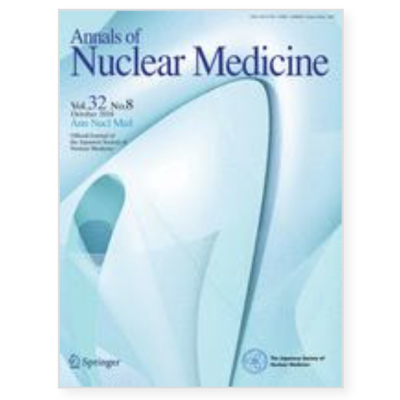Publication
Intratumoral heterogeneity in 18F-FDG PET/CT by textural analysis in breast cancer as predictive and prognostic subrogate.
D. Molina A.M. García Vicente, J. Pérez-Beteta, M. Amo-Salas, A. Martínez-González, M.J. Tello Galán, A. Soriano, V.M. Pérez-García
Annals of Nuclear Medicine 32(6), 379-388 (2018).
MOLAB authors
Abstract
Aim: To assess the predictive and prognostic value of textural parameters in breast cancer obtained by 18F-FDG PET/CT.
Methods: Prospective study including 68 patients with LABC, neoadjuvant chemotherapy (NC) indication and a baseline 18F-FDG PET/CT.
Breast specimens were grouped into molecular phenotypes and classified as responders or non-responders after completion of NC. Patients underwent standard follow-up to obtain the disease-free survival (DFS) and overall survival (OS).
After breast tumor segmentation, three-dimensional (3D) textural measures were computed based on run-length matrices (RLM) and co-occurrence matrices (CM). Relations between textural features with risk categories attending to molecular phenotypes were explored.
Univariate Kaplan-Meier analysis and univariate and multivariate Cox proportional hazard analysis were used to study the potential of textural variables, molecular phenotypes and histologic response to predict DFS and OS. Receiver operating characteristic (ROC) analysis was used to obtain the best cut-off value, the area under the curve (AUC) and sensitivity and specificity considering OS and DFS.
Results: Eighteen patients were classified as responders. Mean±SD of DFS and OS was 70.87±21-85 and 76.77±18.80 months, respectively.
LRE and LRHGE showed relation with risk categories. LGRE, LRHGE and RLNU showed association with the NC response.
Textural variables were significantly associated with OS and DFS in univariate analysis. In multivariate Cox regression analysis, the variables related with OS and DFS were PET stage with SRHGE and PET stage with HGRE respectively.
Conclusion: Texture variables obtained with 18F-FDG PET/CT were predictors of neoadjuvant chemotherapy response and prognosis, being almost so relevant as PET stage at diagnosis in the OS and DFS prediction.















